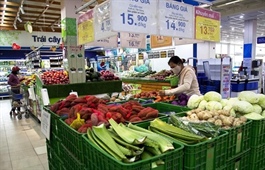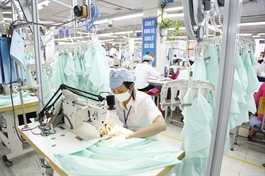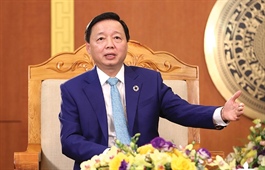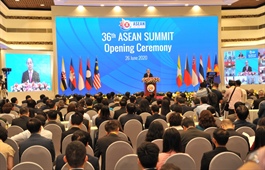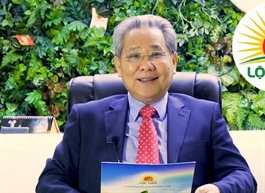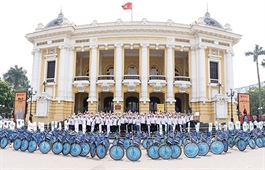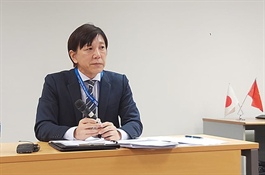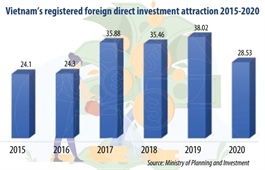RCEP enters into force in 2021 as driving force for economic recovery
RCEP enters into force in 2021 as driving force for economic recovery
The recently signed Regional Comprehensive Economic Partnership (RCEP) agreement, which forms the world’s largest trade bloc, is expected to become a driving force for the economic recovery of the Asia-Pacific region from the unprecedented impact of the Covid-19 pandemic. Signed on November 15, 2020, the pact’s 15 members include the 10 countries of ASEAN (Association of Southeast Asian Nations), Australia, China, Japan, the Republic of Korea (RoK), and New Zealand.
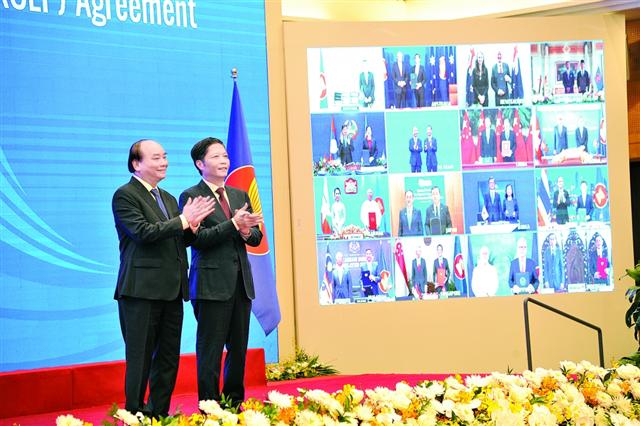
Prime Minister Nguyen Xuan Phuc (left) and Minister of Industry and Trade Tran Tuan Anh at the virtual signing ceremony of the RCEP agreement
|
Largest trade pact
ASEAN Secretary-General Lim Jock Hoi said RCEP would provide much needed certainty and stability for businesses as they cope with the Covid-19 crisis and its aftermath. “The signing of the RCEP agreement at this time is a demonstration of the region’s strong commitment to open, inclusive, and rules-based multilateralism and confidence of the contribution of trade to post-pandemic recovery efforts,” he said.
The RCEP, eight years in the making, broadens and deepens economic linkages across the Asia-Pacific, eases trade in goods and services, facilitates the flow of foreign investments, and enhances protection in e-commerce, intellectual property and other fields.
The RCEP consolidates and builds upon existing ASEAN+1 free trade agreements (FTAs) with five regional trading partners and aims to establish a single, harmonized, predictable set of regional trade rules that incentivize businesses to locate their supply chains within the Asia-Pacific region. The RCEP is the world’s largest FTA in terms of population and gross domestic product (GDP).
Comprised of 20 chapters, the RCEP contains rules governing such topics as market access for goods and services, rules of origin, standards, temporary movement of persons, investment, e-commerce, competition, government procurement, and intellectual property, albeit with varying degrees of ambition and substance. Notably, absent from the RCEP are chapters that address industrial subsidies, state-owned enterprises, labor rights, and the environment. Once implemented, the RCEP will be the world’s largest trade agreement, covering approximately 30 percent of global GDP and one-third of the world’s population. It will be larger than other major trading blocs, including the European Union, the United States-Mexico-Canada Agreement (USMCA) and the Comprehensive and Progressive Agreement for Trans-Pacific Partnership (CPTPP).
A study by the Washington-based Brookings Institution suggests that RCEP has the potential to grow the global real incomes by US$285 billion annually if put into place before 2030, which in absolute gains is twice that of the CPTPP. The deal makes significant strides on rules of origin, intellectual property, and tariff reduction and represents a significant achievement for free trade in the Asia-Pacific.
“After eight years of negotiating with blood, sweat and tears, we have finally come to the moment where we will seal the RCEP Agreement,” Malaysia’s Trade Minister, Mohamed Azmin Ali, said in a statement.
Common rules of origin
One of the most significant changes under RCEP is the creation of common rules of origin for the entire bloc. Once implemented, goods and services from member countries will only require a single certificate of origin. This will allow companies to easily ship products between RCEP signatories without needing to worry about specific rule of origin criteria in each country or for each manufacturing step. A common rule of origin for the RCEP bloc will lower costs for companies with supply chains that stretch throughout Asia and may encourage multinationals that export to RCEP countries to establish supply chains across the bloc.
RCEP also includes limited provisions on services, investment, and standards, the rules of which are relatively weak. RCEP members used a mix of positive and negative lists for services, with CPTPP members opting for the more ambitious latter format. The section on intellectual property was stronger than expected, and the digital copyright rules go beyond what was included in the CPTPP. The agreement does not include labor or environmental chapters. RCEP contains an investor-state dispute settlement provision, but it will not be operational unless members decide to activate it in three years when they revisit the provision. RCEP also includes a competition chapter; however, unlike the CPTPP, it does not include disciplines on state-owned enterprises.
Trade connectivity and facilitation
At a virtual leaders’ summit chaired by Vietnam’s Prime Minister Nguyen Xuan Phuc on November 15, 2020, Singaporean Prime Minister Lee Hsien Loong described the signing of the pact as a “major step forward for the world, at a time when multilateralism is losing ground, and global growth is slowing”.
“It signals our collective commitment to maintaining open and connected supply chains, and to promoting freer trade and closer interdependence especially in the face of Covid-19 when countries are turning inwards and are under protectionist pressures,” he said.
The pact also gives its members larger stakes in each other’s success and prosperity, while helping to strengthen regional peace and security, he added.
Lee noted that the diversity of the participating RCEP countries shows how economies at different stages of development can come together and contribute to each other’s development, as well as to the multilateral trading system.
“This diversity, and the strong links that the participating countries have with the US, Europe and the rest of the world, also reflects the inclusiveness and openness of the agreement,” he added.
Negotiations on the RCEP started in late 2012 at the 21st ASEAN Summit in Phnom Penh (Cambodia). The agreement initially comprised 10 ASEAN countries in addition to Australia, China, Japan, New Zealand, the RoK, and India. India made last-minute demands in the run-up to the final stage of the 35th ASEAN Summit in Bangkok (Thailand), derailing the talks. During the final talks in November 2019, Indian Prime Minister Narendra Modi announced India’s withdrawal from the agreement. Signatories of the deal said the door remained open for India to join in the future. While India’s withdrawal was quite unexpected, it did not affect the progress of negotiations. The remaining 15 countries continued to move forward to sign the agreement, which goes into effect in 2021.








